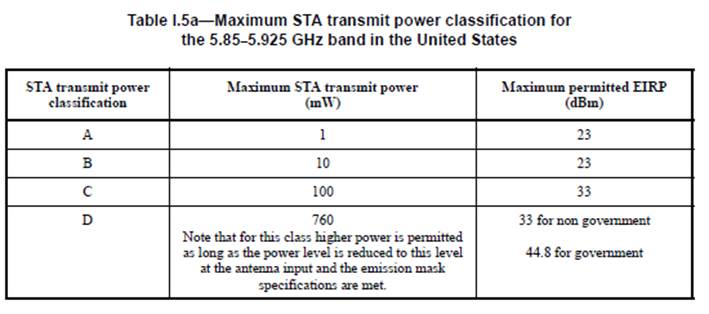Dear 802.11 regulatory members,
I received the enquiry below.
As IEEE-SA no longer has an “interpretations” process, we have no formal process to respond to
such requests. So any such response will necessarily be on an individual basis.
A possible response might be:
1.
Nothing at all (there is not a problem, or the commenter is asking for consultancy, or nobody cares)
2.
A determination that the standard needs to be changed
3.
A 1:1 correspondence with the sender
If anybody determines that the standard needs to be changed, please let me know,
and I’ll work with the TGmc chair to ensure that the topic is covered.
If anybody wants to respond directly to the sender, feel free to do so.
Best Regards,
Adrian P STEPHENS
Tel: +44 (1793) 404825 (office)
Tel: +44 (7920) 084 900 (mobile, UK)
Tel: +1 (408) 2397485 (mobile, USA)
----------------------------------------------
Intel Corporation (UK) Limited
Registered No. 1134945 (England)
Registered Office: Pipers Way, Swindon SN3 1RJ
VAT No: 860 2173 47
From: Liesbeth Gomme [mailto:liesbeth.gomme@xxxxxxx]
Sent: 25 November 2014 11:56
To: Stephens, Adrian P
Cc: Tony Kerselaers
Subject: 802.11p US regulation for transmit power
Dear Mr. Stephens,
I have an inquiry with regard to the IEEE 802.11 regulation on the max. permitted transmit power. Heinz Mellein provided me with your contact
details.
I found that the standard gives an unclear formulation. A first concern is that specifications are currently only given for non-mobile operations
and not specified explicitly for mobile operation.


page 31, Table I.5a, in
IEEE Standard for Information Technology-Telecommunications and information exchange between systems-Local and metropolitan area networks-Specific requirements Part 11: Wireless LAN Medium Access Control (MAC) and Physical Layer (PHY) Specifications, Amendment
6: Wireless Access in Vehicular Environments, July 2010.
When assuming class C, the max. permitted e.i.r.p. is limited to 33dBm and the max. output power (at the antenna input) is specified as 100mW
(20dBm). An antenna gain of 13dBi can be assumed in a non-mobile operation in an RSU.
If we base ourselves on this table for mobile operation, the max. EIRP of 33dBm on page 31, Table I.5a is not the limiting criterion. Whereas
the Max. output power of 20dBm in the same table is because the antenna gain can be assumed to be less than 13dBi in mobile operation.
Is this a correct interpretation of the standard, and is it indeed so that an OBU should fulfill the most limiting of the specified value in table
I.5a, which is Maximum power @ antenna input?
|
Class |
Max. power @ antenna input [mW] |
|
A |
1 |
|
B |
10 |
|
C |
100 |
|
D |
760 |
Looking forward to your reply. Many thanks in advance.
Best regards,
Liesbeth
Liesbeth Gommé
![]()
Central Research & Development / Innovation Center Connectivity / Connectivity Leuven
NXP Semiconductors
Interleuvenlaan 80, 3001 Leuven, Belgium
Tel +32 (0)16 390 867,
Liesbeth.Gomme@xxxxxxx
If you wish to be removed from this reflector, do not send your request to this reflector - it will have no effect.
Instead, go to http://listserv.ieee.org/cgi-bin/wa?SUBED1=STDS-802-11-REG and then press the LEAVE button.
Further information can be found at: http://www.ieee802.org/11/Email_Subscribe.html _______________________________________________________________________________